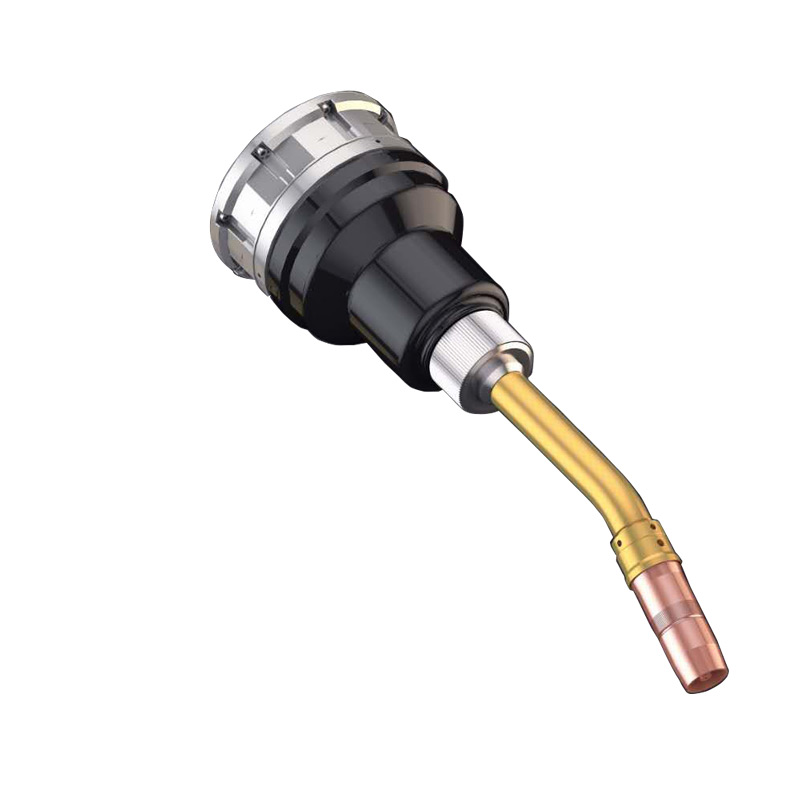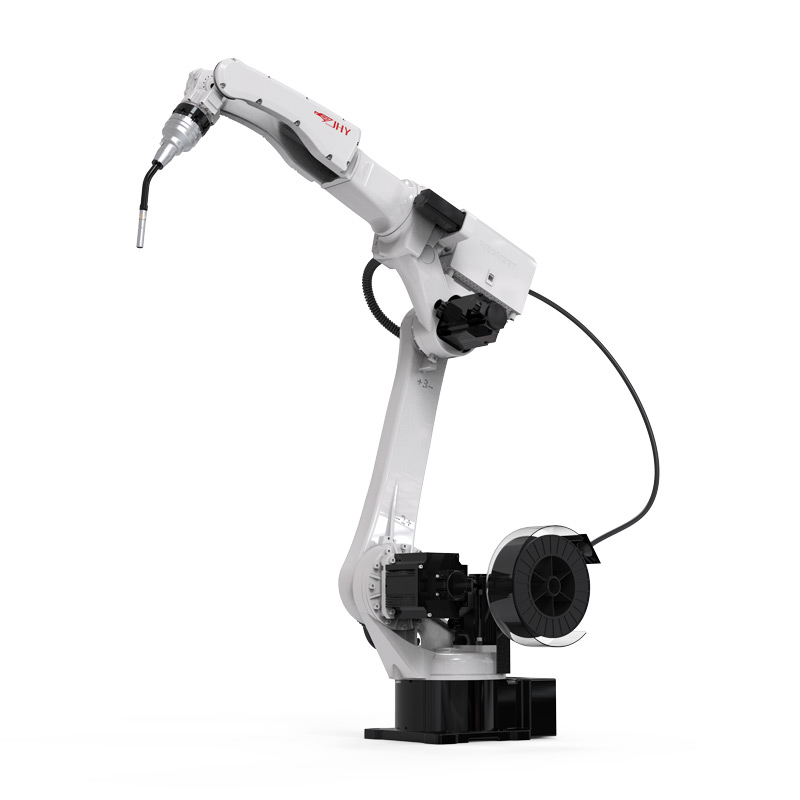The 6-axis cobot has increased the speed of the TIG welding process.
Ohio-based sheet metal fabricator Raymath offers welding, bending, laser cutting, and machining of all sorts of metals for almost any industry. The company produces parts that go into conveyors for large warehouses, construction equipment used worldwide, transportation and parking automation systems, and food equipment. CEO/President Greg LeFevre and his business partner, Jay Woeste, bought the 40-year-old tool and die shop in May 2019 and quickly expanded. Welding Robot Programming

“Customers want to have fewer suppliers,” said LeFevre. “So instead of having 100 suppliers, they would like to have 10 that can do more. We wanted to satisfy those needs.”
With a background in automation, LeFevre knew automation would be key to meeting the company’s goals, but his experience was in high-volume, low-mix manufacturing. “It was very easy to automate when you make millions of a specific part. Moving into the fab-shop, sheet metal-type business, we’re now looking at a large number of different parts, but much smaller volumes of those parts.”
Complex aluminum welding was one of the company’s biggest challenges for growth, as it was all TIG welded by hand with precise welds on top and underneath, difficult angles and heat settings, and multiple moving parts.
Because traditional automation doesn’t lend itself to high-mix, low-volume operations, the company needed a much more flexible approach.
While researching automation options, LeFevre discovered Universal Robots (UR) and found a UR-certified systems integrator, THG Automation, close by. THG’s CEO Matt Hendey invited LeFevre to bring parts with him to get hands-on with the company’s UR cobot-based MIG welding system.
“I’m always one who wants to try things myself—that’s what’s going to show me whether it’s going to work,” said LeFevre. “Within the four hours that I was there, we programmed 20 weld points. I was actually practicing and sampling on the parts that I was going to make. It proved to me without a doubt: If I can program this in four hours and actually have my parts running, there’s no doubt this can work in our shop. I wrote the purchase order that same night.”
Raymath started with a cobot-based MIG welding application and expanded its automation strategy to include complex TIG welding applications. The company has grown from $15 million in revenue to $50 million in about three years, and LeFevre attributes the growth to the fast adoption of technology.
“The learning curve isn’t as steep as what people think it is. The cost to get into it isn’t as much as people think,” he stated. “Don’t be afraid to take that step. You’re going to find out that even if it doesn’t go perfect, that ROI is going to be there in a pretty short time, and you’re going to find a new way and better ways that will spur ideas from other people in the plant.”
“The THG robot units weld almost 50% faster than manual weld, sometimes more,” said Nick Ogle, robotics specialist with Raymath. That lets the company produce parts more quickly with its existing staff, but also allows it to support higher-volume orders.
With robotic welding, the fixtures, push angles, speed, and heat are the same every time, which leads to faster, more consistent, and higher-quality welds than manual welding. Cobot arms also can reach all the way around a part in ways a human welder can’t, so almost all welds can be done without rotating the part. And with fewer starts and stops, robotic welding produces a cleaner weld that also reduces required grinding time.
As a high-mix shop, Raymath started with about 20 different parts on the welding system, but LeFevre quickly saw new opportunities to add more parts.
“Within two months, we decided to buy a second robot because we had filled the first one up, and the guys—Nick especially, who is our leader in that area—were picking up on the programming as fast as we could add parts,” LeFevre explained. “We had people now coming to us saying, ‘This would be a good part to put on the THG unit.’”
Some of these requests came from operators who didn’t want to weld difficult parts manually; some came from the plant manager who saw the ability to fill larger orders; others came from supervisors who needed additional manpower to fill orders.
Two robot operators typically run two welding cells each, depending on workload and cycle times. “The operators will typically run one robot, hit start, and while that one’s running, they’ll be loading the other one, and then will just jump back and forth,” Ogle explained. “Seeing all four cells run at the same time is pretty gratifying, knowing you’re pushing that much product out the door that much faster.”
For one aluminum part, the UR-based THG welding system has reduced weld times from 15 minutes per part manually to five to six minutes per part; for another, weld times shrunk from three to four minutes each to 30 to 40 seconds. Cobots handle hard-to-staff processes with half the number of operators and weld at twice the speed, resulting in a four-times productivity improvement.
But in LeFevre’s opinion, the opportunity cost is the most invaluable. “There was business that we were able to take on that we would have never had the manpower and the ability to do.”
Now that Raymath can satisfy all of its customers’ needs, they are less likely to go to a competitor who might also gain future business. “It builds a better relationship with our customer, and how you measure that is hard to tell, but I know that it’s extremely valuable,” LeFevre explained.
After seeing success in MIG welding, LeFevre approached THG for a TIG system. “It was an extension of what we were doing with our MIG welding, so adding TIG to our package with the Universal Robot was pretty seamless,” said Hendey. “Once you get the precision and everything down, the THG unit can make a very, very good TIG weld, and can do it anywhere from two to six times faster than doing it by hand.”
Hendey noted that while automated MIG welding can be applied to many different materials and applications, it may be difficult for manufacturers to justify both a MIG system for aluminum parts and a TIG system for stainless parts, especially at low volumes. With the THG cold wire feed push/pull TIG system, Raymath can weld both stainless and aluminum parts with the same system. The UR cobots in the THG system can also work around fixtured parts in one process. Some parts are much larger than the table they’re being welded on, so those parts are fixtured so the TIG weld occurs on the table and the rest of the part hangs off the edge.
The Fabricator is North America's leading magazine for the metal forming and fabricating industry. The magazine delivers the news, technical articles, and case histories that enable fabricators to do their jobs more efficiently. The Fabricator has served the industry since 1970.
Easily access valuable industry resources now with full access to the digital edition of The Fabricator.
Easily access valuable industry resources now with full access to the digital edition of The Welder.
Easily access valuable industry resources now with full access to the digital edition of The Tube & Pipe Journal.
Easily access valuable industry resources now with full access to the digital edition of The Fabricator en Español.
Staci Martinez joins The Fabricator Podcast to talk about starting her own small business in Sioux Falls, S.D...
© 2023 FMA Communications, Inc. All rights reserved.

Robot Welding Training Not yet registered? Sign up